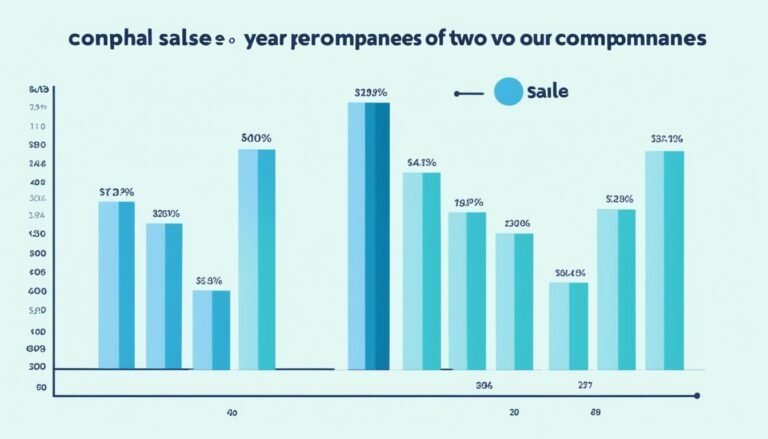Navigating Fear-Based Selling Tactics Effectively
Fear-based selling tactics are sales techniques that leverage psychological manipulation to drive consumer behavior. In fear-based marketing strategies, fear is used as a powerful tool to motivate individuals to buy, donate, or comply. Marketers tap into our innate fears and vulnerabilities, aiming to create a sense of urgency and necessity.
However, it is crucial to approach fear-based selling tactics ethically. Instead of exploiting fears, effective marketers address existing fears and provide genuine solutions. By understanding the psychology behind fear and consumer behavior, businesses can navigate fear-based tactics effectively and build lasting relationships with their audience.
Key Takeaways:
- Fear-based selling tactics utilize psychological manipulation to drive consumer behavior.
- Marketers should aim to address existing fears and provide genuine solutions instead of exploiting fears.
- Understanding consumer psychology is important in navigating fear-based tactics effectively.
- Ethical marketing practices prioritize building lasting relationships based on trust and authenticity.
- Navigating fear-based selling tactics effectively can lead to better outcomes and customer satisfaction.
The Role of Fear in Marketing
Fear is a powerful emotion that can significantly impact consumer behavior in the realm of marketing. Research has shown that fear appeals can be effective in persuading consumers to take action, provided certain conditions are met.
Consumer psychology plays a crucial role in understanding how fear can be harnessed to drive desired outcomes. By leveraging emotional triggers and employing persuasive tactics, marketers can tap into the fears and concerns of their target audience.
Fear Appeal
One of the most common strategies used in fear-based marketing is fear appeal. This tactic involves creating a sense of fear or anxiety within consumers to motivate them to take action. By highlighting potential negative consequences or threats, marketers aim to prompt consumers to engage with their products or services as a means of avoiding or mitigating those outcomes.
In order for fear appeals to be effective, consumers must believe that they are likely to be personally affected by the issue at hand. The perceived severity of the consequences and the individual’s belief in their ability to avoid or overcome the feared outcome also play crucial roles in determining the effectiveness of fear-based marketing.
Emotional Triggers and Consumer Psychology
Consumer psychology has shown that emotional triggers can strongly influence consumer behavior. Fear, being a primal and instinctual emotion, can evoke strong responses and impact decision-making processes. Understanding the psychological triggers that evoke fear can allow marketers to effectively tap into and manipulate these emotions to drive action.
For example, fear of missing out (FOMO) is a common emotional trigger used by marketers to create a sense of urgency and encourage consumers to make immediate purchases. By highlighting limited availability or time-limited offers, marketers can fuel consumers’ fear of regret and prompt them to take immediate action.
“FOMO is a powerful emotional trigger that taps into our innate fear of missing out on opportunities. Marketers can leverage this fear to create a sense of urgency and drive consumer behavior.”
By understanding and harnessing the role of fear in marketing, businesses can shape consumer behavior and drive desired outcomes. However, it is crucial for marketers to use fear appeals ethically and responsibly, ensuring that they address genuine fears and concerns while providing genuine solutions.
Examples of Fear in Marketing
Various organizations and brands have successfully used fear to drive their marketing campaigns. By tapping into people’s fears and concerns, these companies have effectively captured attention and motivated action.
World Wildlife Fund:
The World Wildlife Fund (WWF) utilizes the fear of climate change to raise awareness about environmental issues. Through their campaigns, they highlight the potential consequences of inaction, such as the loss of wildlife habitats and the destruction of ecosystems. By emphasizing the urgency of addressing climate change, WWF prompts individuals to take action and support their cause.
Logitech Video Security:
Logitech Video Security leverages the fear parents have for their children’s safety. By showcasing how their video security systems can provide peace of mind and protect loved ones, Logitech taps into the emotional instinct of wanting to safeguard family members. They emphasize the need for constant vigilance and offer a solution that addresses this fear.
Save the Children:
Save the Children effectively uses emotional appeals to create a fear of not making a difference. Through their campaigns, they present heart-wrenching stories of children in need, highlighting the dire consequences of inaction. By appealing to people’s compassion and fear of not making an impact, Save the Children motivates individuals to donate and support their mission.
Victoria’s Secret:
Victoria’s Secret employs the fear of missing out on a great deal to drive sales. Through limited-time offers and exclusive promotions, they create a sense of urgency and scarcity. By tapping into the fear of missing out and the desire to obtain a desirable product at a discounted price, Victoria’s Secret encourages impulse purchases and drives sales.
The Effectiveness of Fear-Based Marketing
Fear-based marketing has long been used as a strategy to create emotional responses and drive behavior change. By tapping into people’s fears and insecurities, marketers aim to motivate them to take action. However, measuring the direct impact of fear-based marketing on buyer behavior can be challenging.
In the workplace, fear-based leadership is another application of fear-based tactics. Unfortunately, it is an ineffective approach that often leads to negative consequences. Fear-based leadership diminishes teamwork, fosters a culture of mistrust, stifles innovation, and ultimately results in low job satisfaction and high employee turnover rates.
Let’s take a closer look at the consequences of fear-based leadership:
| Consequence | Description |
|---|---|
| Decreased Teamwork | Fear-based leadership creates an environment where employees are more focused on self-preservation than collaboration. This hinders teamwork and collaboration, leading to reduced productivity and efficiency. |
| Creation of Silos and Mistrust | When fear is the driving force behind leadership, employees tend to operate in silos and withhold information from one another. This results in a lack of trust among team members, inhibiting communication and cooperation. |
| Stifled Innovation | Fear-based leadership discourages risk-taking and creativity. Employees are less likely to share new ideas or propose innovative solutions when they fear negative consequences. This stifles innovation and limits the potential for growth. |
| Low Job Satisfaction and High Turnover Rates | Working in an environment characterized by fear and anxiety takes a toll on employee satisfaction. The constant fear of failure or punishment leads to increased stress levels, lower morale, and ultimately, higher turnover rates as employees seek healthier and more supportive work environments. |
Fear-based leadership not only affects the well-being of individuals but also has a significant impact on the overall success and productivity of organizations. As leaders, it is essential to recognize the shortcomings of fear-based approaches and strive for more effective leadership styles that promote trust, transparency, and psychological safety.
Psychological Safety: The Antidote to Fear-Based Leadership
Creating a psychologically safe work environment is key to counteracting the negative effects of fear-based leadership. When employees feel safe to express their opinions, voice their concerns, and take risks without fear of retribution, they are more engaged and motivated to contribute their best work. Psychological safety fosters collaboration, innovation, and workplace satisfaction, creating a positive and productive organizational culture.
The Importance of Psychological Safety in Leadership
In today’s fast-paced and competitive business landscape, psychological safety has emerged as a critical factor in effective leadership. Psychological safety refers to the shared belief among team members that they can openly express their thoughts, ideas, and concerns without fear of negative consequences. When leaders prioritize psychological safety, it creates an environment where employees feel valued, empowered, and motivated to contribute their best.
Teamwork: Psychological safety lays the foundation for strong teamwork. When team members feel safe and supported, they are more likely to collaborate, communicate openly, and trust one another. By fostering a culture of psychological safety, leaders can promote collaboration, synergy, and the collective intelligence of the team.
Innovation: Psychological safety is closely linked to innovation. When employees feel safe to express unconventional ideas, take risks, and challenge the status quo, it fosters a culture of creativity and innovation. Leaders who prioritize psychological safety encourage their teams to think outside the box, explore new solutions, and drive organizational growth.
Productivity: Psychological safety has a direct impact on productivity. When employees feel safe to voice their opinions, share feedback, and seek help without fear of judgment or retribution, it enhances their sense of belonging and motivation. This, in turn, leads to higher levels of engagement, job satisfaction, and ultimately, increased productivity.
Employee Engagement: Psychological safety is a key driver of employee engagement. When individuals feel psychologically safe, they are more likely to be actively involved in their work, contribute ideas, and share feedback. Leaders who create an environment of psychological safety nurture employee engagement, resulting in higher retention rates, improved performance, and a positive company culture.
Psychological safety enables individuals to bring their authentic selves to work, free from fear and judgment. It empowers employees to take risks, embrace challenges, and learn from mistakes. By promoting psychological safety, leaders can create a workplace where teamwork, innovation, productivity, and employee engagement thrive.
The Impact of Psychological Safety in the Workplace
| Benefit | Description |
|---|---|
| Enhanced Teamwork | Psychological safety promotes collaboration, communication, and trust among team members. |
| Increased Innovation | Psychological safety encourages creativity, risk-taking, and the exploration of new ideas. |
| Improved Productivity | Psychological safety leads to higher levels of engagement, job satisfaction, and productivity. |
| Higher Employee Engagement | Psychological safety fosters a sense of belonging, motivation, and active participation in work. |
The Ethics of Fear-Based Marketing
When utilizing fear in marketing strategies, it is essential to consider the ethical implications. Fear-based marketing should aim to address existing fears and provide meaningful solutions rather than manufacturing fear for manipulative purposes. Failing to uphold ethical standards can not only damage a brand’s reputation but also hinder authentic engagement with the target audience. To build long-term, trusting relationships, marketers must prioritize ethical marketing practices that prioritize the well-being of consumers.
The Importance of Authentic Engagement
Authentic engagement forms the foundation of ethical marketing practices. By genuinely connecting with the audience, marketers establish trust and credibility, fostering a stronger bond with consumers. Manipulative tactics that exploit fear can result in short-term gains but often lead to negative repercussions. By employing honest and transparent communication, companies can forge authentic connections with their audience, encouraging loyalty and long-term brand advocacy.
“Ethical marketing is about building genuine relationships with consumers based on mutual trust and respect. Fear-based marketing tactics may provide short-term gains, but they can erode brand reputation and hinder authentic engagement.”
The Power of Positive Solutions
Instead of solely capitalizing on fear, ethical marketers focus on providing positive solutions to the challenges consumers face. By addressing these existing fears and offering practical remedies, marketers can establish themselves as trusted partners in consumers’ lives. This approach not only empowers individuals but also enhances the brand’s reputation as a reliable source of support and solutions.
An Image Illustrating Ethical Marketing
The Impact on Brand Reputation
In today’s interconnected world, brand reputation is crucial. Manipulative or unethical use of fear-based marketing can quickly tarnish a brand’s image, leading to diminished trust and credibility. Conversely, placing the emphasis on ethical marketing practices helps bolster a brand’s reputation as one that genuinely cares about its customers, their well-being, and their values.
Building Trust and Long-Term Relationships
Authentic engagement rooted in ethical marketing principles allows brands to build trust and establish long-term relationships with their audience. By prioritizing the emotional well-being and trust of consumers, marketers can create a loyal customer base that not only supports the brand but also advocates for it. This trust forms the backbone of successful marketing strategies and ensures the sustainability and growth of the business.
The Need for Effective Leadership Approaches
Fear-based leadership is detrimental to both individuals and organizations. Leaders who rely on fear to motivate their teams create a climate of anxiety and insecurity. This approach erodes trust, stifles collaboration, and hampers innovation. In contrast, effective leaders inspire their teams by leading with respect, transparency, and trust.
Respect is the cornerstone of effective leadership. When leaders respect their team members, they value their opinions, contributions, and unique skills. This fosters a sense of belonging and cultivates an environment where individuals feel empowered to express their ideas and take risks.
Transparency is another crucial aspect of effective leadership. Transparent leaders communicate openly and honestly, sharing information about the organization’s goals, challenges, and decisions. This transparency builds trust and ensures that team members feel informed and included in the decision-making process.
Trust is the foundation of any successful team. Effective leaders trust their team members to do their best work and provide them with the autonomy and support they need to excel. This trust creates a sense of psychological safety, where individuals feel safe to share their thoughts, ask for help, and take calculated risks.
By embracing these leadership approaches, leaders can create a supportive work environment that cultivates success and brings out the best in their teams. When fear is replaced with respect, transparency, and trust, individuals feel valued and motivated to contribute their skills and ideas. This leads to increased collaboration, innovation, and overall job satisfaction.
The Power of Effective Leadership
“Effective leaders inspire their teams by leading with respect, transparency, and trust.”
- Respects and values team members
- Communicates openly and transparently
- Builds trust and creates psychological safety
- Fosters collaboration, innovation, and job satisfaction
The Impact of Fear-Based Leadership
Fear-based leadership has significant negative repercussions for both individuals and organizations. This style of leadership fosters an environment of stress, overwhelm, and insecurity, which ultimately hampers motivation and performance. When employees are constantly driven by fear, they become disengaged, collaboration suffers, and valuable ideas and solutions are stifled. Over time, fear-based leadership erodes productivity and inhibits the growth of the business.
The stress that accompanies fear-based leadership can have detrimental effects on individuals. It creates a sense of constant pressure and anxiety, leading to decreased mental well-being and overall job satisfaction. The overwhelming nature of this leadership style can make employees feel overwhelmed and burdened by unrealistic expectations and constant pressure to perform. Insecurity also permeates the workplace, as fear-driven leaders often exhibit inconsistent behavior and create an atmosphere of unpredictability.
Moreover, fear-based leadership diminishes motivation among employees. Rather than inspiring and empowering their team members, fear-based leaders rely on intimidation and punishment to drive performance. This approach generates short-term compliance, but it fails to cultivate genuine motivation and commitment. As a result, employees may feel demoralized, disempowered, and devoid of intrinsic motivation to excel in their roles.
The performance of both individuals and the organization as a whole suffers under fear-based leadership. With an environment characterized by fear and distrust, employees are less likely to take risks, share innovative ideas, or push themselves to achieve their full potential. Collaboration and teamwork become compromised, hindering the ability to tackle complex challenges and achieve strategic objectives. In addition, fear-based leadership stifles creativity and hampers problem-solving, preventing the development of novel solutions and adaptation to changing circumstances.
“Fear-based leadership erodes trust, stifles creativity, and undermines employee performance.”
Ultimately, fear-based leadership poses a significant threat to the long-term success of an organization. Over time, the detrimental effects on employee morale and motivation accumulate, leading to increased turnover rates and difficulty attracting top talent. Additionally, the lack of collaboration and innovation stifles growth and inhibits the organization’s ability to stay competitive in a rapidly evolving market.

| Effects of Fear-Based Leadership | Consequences |
|---|---|
| Increased stress levels | Decreased job satisfaction and mental well-being |
| Feelings of overwhelm and insecurity | Diminished performance and motivation |
| Disengagement and collaboration breakdown | Stifled innovation and decreased teamwork |
| Inhibited creativity and problem-solving | Reduced adaptability and agility |
| Increased turnover rates | Difficulty attracting and retaining top talent |
The Power of Psychological Safety in Leadership
Creating a psychologically safe work environment is crucial for empowering employees and fostering innovation, creativity, and collaboration. When team members feel safe to express their ideas, concerns, and mistakes without fear of criticism or punishment, they can thrive and unleash their full potential.
Psychological safety is a key factor in workplace satisfaction, as it nurtures a culture of trust, openness, and mutual respect. It encourages individuals to take risks, share diverse perspectives, and contribute their unique talents, leading to the emergence of new ideas and breakthrough innovations.
“Psychological safety is the belief that one will not be punished or humiliated for speaking up with ideas, questions, concerns, or mistakes.” – Amy Edmondson
By creating an environment where employees feel psychologically safe, leaders inspire a sense of empowerment. This empowerment enhances employee engagement and motivates individuals to go above and beyond their responsibilities, resulting in improved performance and productivity.
Fostering Innovation
Psychological safety fuels innovation by encouraging experimentation and risk-taking. When team members feel safe to explore new ideas and challenge established norms, they are more likely to propose innovative solutions and drive positive change. The absence of fear allows for the free flow of ideas, promotes collaboration, and unlocks the full creative potential of the team.
Collaboration and Creativity
Psychological safety cultivates a culture of collaboration, where individuals feel comfortable working together, sharing knowledge, and supporting one another. When employees are not afraid of being judged or criticized, they are more likely to collaborate, exchange ideas, and co-create solutions. This collaborative environment nurtures creativity and collective intelligence, resulting in higher-quality outcomes.
Effective leaders prioritize psychological safety by actively listening to their team members, valuing their input, and providing constructive feedback. They encourage open communication, promote a growth mindset, and celebrate experimentation and learning from failures. By fostering an environment of psychological safety, leaders create a positive work experience, enhancing workplace satisfaction and overall employee well-being.
In conclusion, psychological safety is a powerful catalyst in leadership that enables empowerment, fosters innovation, stimulates creativity, and promotes collaboration. By creating a psychologically safe work environment, leaders can unlock the full potential of their teams, drive better business outcomes, and cultivate a culture of excellence.
The Drawbacks of Fear-Based Marketing
Fear-based marketing can be a powerful tool, but when overused, it can have detrimental effects. One of the main drawbacks is audience burnout. Constant exposure to fear-inducing messages can leave audiences feeling overwhelmed and exhausted.
Negativity is another issue that arises from fear-based marketing. Audiences may become resentful towards brands that constantly use fear tactics, leading to a negative perception of the company and its products or services.
Moreover, fear-based marketing can evoke passive helplessness among consumers. When individuals are bombarded with fear-driven messages without clear solutions or guidance, they may feel unable to take action, resulting in a sense of helplessness.
Alternatively, fear-based marketing can ignite angry activism. Instead of passively accepting the fear-inducing message, some individuals may react with anger and take action against the brand or the cause they perceive as manipulative.
In order to avoid these drawbacks, it is important to strike a balance between fear and positive outcomes. Providing solutions and highlighting the benefits or solutions to the fear can help alleviate anxiety and increase the chances of audience engagement and response rates.
The Complexity of Fear-Based Marketing
The effects of fear-based marketing on buyer behavior are influenced by the complexity of individual minds and cognitive diversity. Each person’s unique traits, experiences, and psychological makeup play a significant role in how they respond to fear appeals in marketing campaigns.
Fear-based marketing taps into the primal instincts and emotions of buyers, aiming to elicit a sense of urgency or threat that prompts them to take a desired action. However, the impact of fear-based messaging is not universally predictable or uniform.
Psychology has explored the use of reinforcement, both positive and negative, as a means of controlling behavior. In the context of fear-based marketing, negative reinforcement often takes the form of highlighting the potential consequences or risks of not taking action, while positive reinforcement emphasizes the benefits or rewards of compliance.
While some buyers may be highly responsive to fear-based marketing, others may be more resistant or skeptical. Factors such as individual resilience, personal values, cultural influences, and cognitive biases can all contribute to variations in buyer behavior.
Establishing a direct cause-and-effect relationship between fear-based marketing and buyer behavior is challenging. The decision-making process of buyers is complex and multifaceted, influenced by a multitude of internal and external factors. The effectiveness of fear-based marketing campaigns can vary depending on the target audience, the specific industry, and the overall message and delivery.
The Importance of Authentic Engagement
When designing fear-based marketing campaigns, it is crucial to approach them cautiously and ethically. Manipulative or excessive use of fear can undermine trust and erode the authenticity of the brand-consumer relationship. Genuine engagement requires a balance between tapping into emotions and providing meaningful value and solutions.
| Factors Influencing Buyer Behavior in Fear-Based Marketing |
|---|
| Cognitive diversity |
| Individual traits and experiences |
| Psychological makeup |
| Personal values |
| Cultural influences |
| Cognitive biases |
Conclusion
Fear-based selling tactics have the potential to be effective in marketing, but it is crucial to use them ethically and responsibly. Effective leadership plays a key role in navigating fear-based tactics by creating a psychologically safe work environment where employees feel comfortable and empowered.
By fostering trust, transparency, and open communication, leaders can inspire their teams to perform at their best. Ethical marketing goes hand in hand with effective leadership, as it involves addressing existing fears and providing genuine solutions.
By navigating fear-based tactics effectively and ethically, businesses can achieve better outcomes and build lasting relationships with their audience. Psychological safety in the workplace fosters innovation, collaboration, and employee engagement, leading to improved productivity and business success.
Overall, the combination of fear-based selling tactics, effective leadership, psychological safety, and ethical marketing practices creates a powerful foundation for businesses to connect with their target audience, drive meaningful actions, and build a positive brand reputation.







